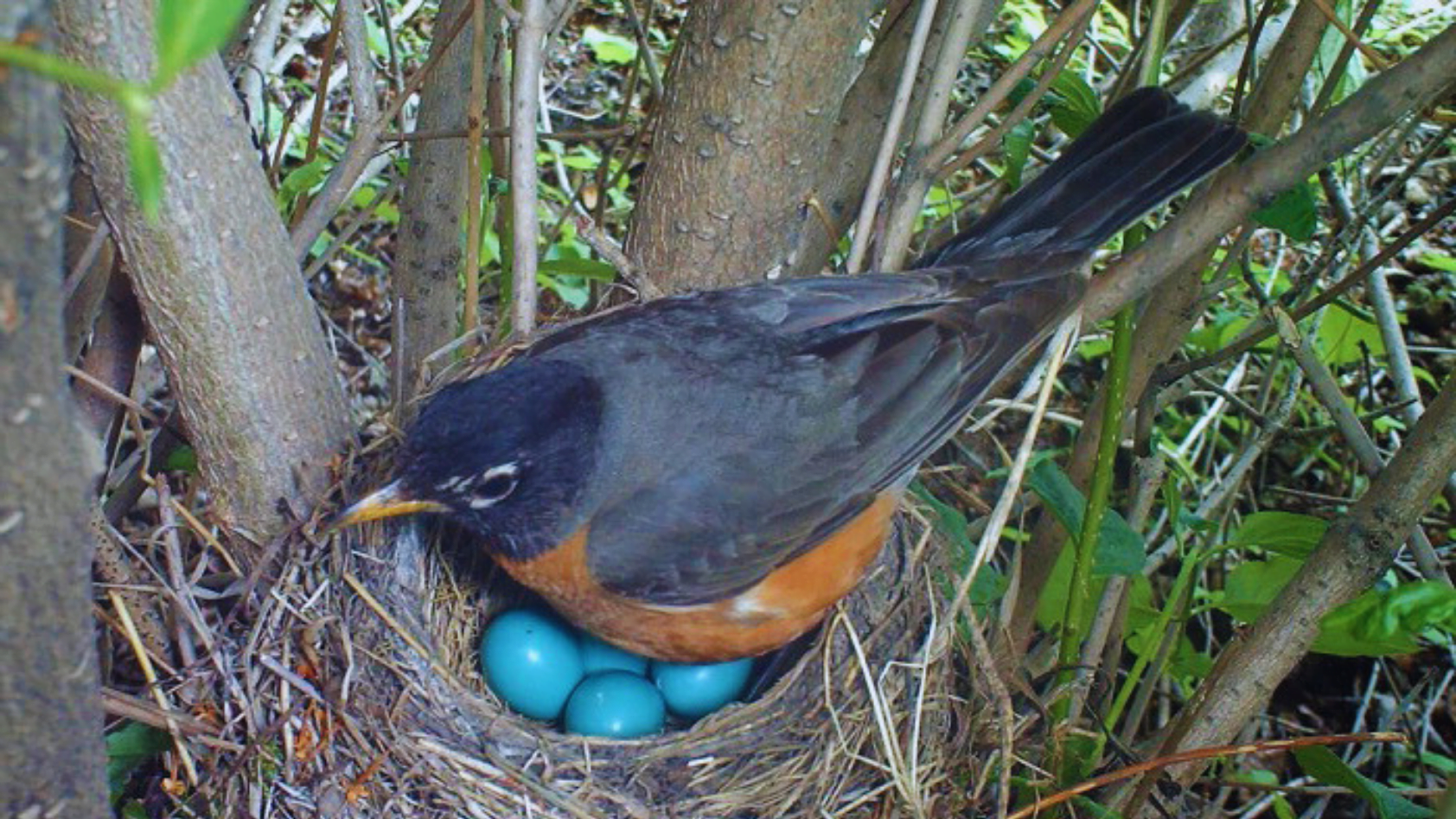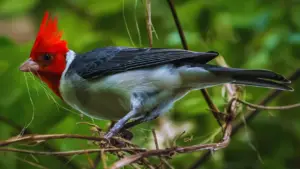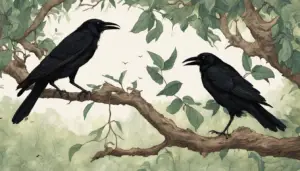Have you ever come across a bird’s nest with eggs that were a striking shade of blue? These blue treasures in nature are not commonly found but are a wonder to behold. In this article, we will explore different bird species known for their blue-colored eggs.
Key Takeaways:
- Blue eggs in bird nests are unique and fascinating to observe.
- Several bird species are known for laying blue-colored eggs, including the Eastern Bluebird, American Robin, and Mountain Bluebird.
- Conservation efforts are important to protect bird species that lay blue eggs and their habitats.
Why Do Some Birds Lay Blue Eggs?
Birds have evolved to lay eggs of different colors and patterns, with some producing blue-colored eggs. There are a few reasons why some birds lay blue eggs:
- Camouflage: Blue eggs can blend in with the environment where the bird nests, making them less visible to predators. This can increase the chances of the eggs successfully hatching.
- Thermoregulation: Blue pigments in the eggshell can help regulate temperatures inside the egg during incubation.
- Mate attraction: Some birds have evolved to lay blue eggs as a way to signal to potential mates that they are healthy and genetically fit.
Birds that lay blue eggs have adapted to their particular environment and nesting habits. Here are some bird species known for their blue-colored eggs:
Eastern Bluebird (Sialia sialis)
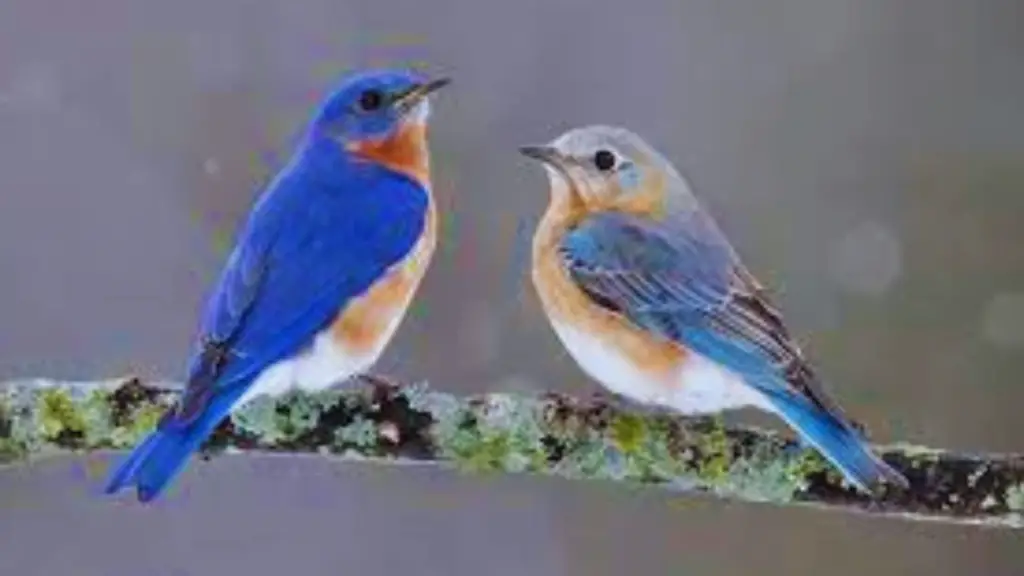
If you’re looking for a blue egg-laying bird species in North America, the Eastern Bluebird is an excellent place to start. These small, cavity-nesting birds typically lay eggs that are light blue in color. The blue coloration of their eggs may serve as a form of camouflage, making it harder for predators to spot their nests.
Eastern Bluebirds are found throughout much of North America, from the eastern United States to as far west as the Rocky Mountains. They prefer open habitats such as fields, meadows, and clearings in forests.
| Nesting Habits | Preferred Habitat |
|---|---|
| Eastern Bluebirds often nest in tree cavities or nesting boxes. Females lay one egg per day until they have a clutch of three to seven eggs. | They prefer open habitats such as fields, meadows, and clearings in forests. They will also nest in suburban areas and rural farmland. |
Eastern Bluebirds are an important species to watch for those interested in conserving blue egg-laying bird breeds. Due to habitat loss and competition with introduced species such as the House Sparrow, Eastern Bluebirds have experienced population declines in parts of their range. Providing nesting boxes and protecting open habitats can go a long way in helping these beautiful birds thrive.
American Robin (Turdus migratorius)
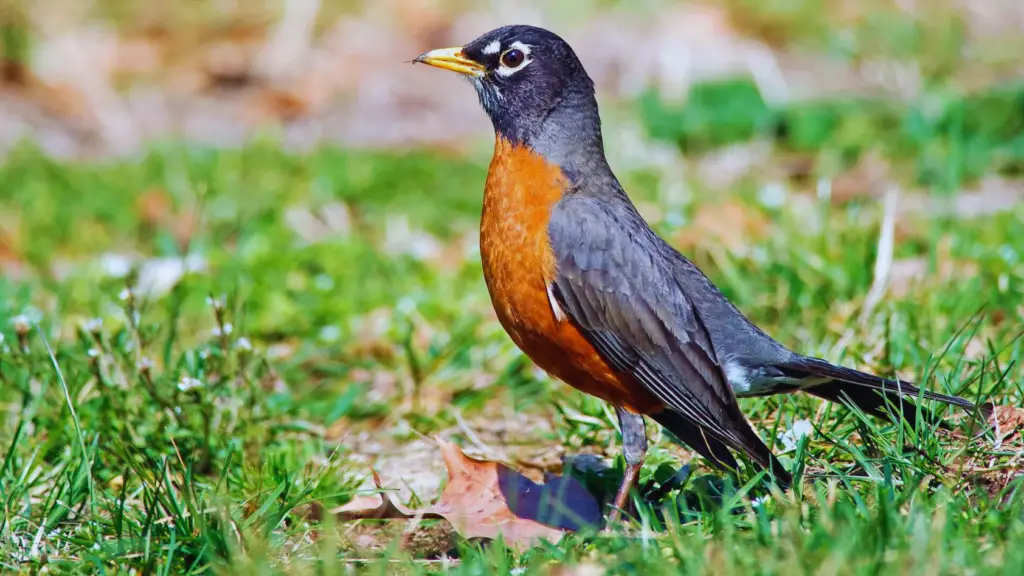
The American Robin is a common sight in North America, known for its distinct orange breast and melodic song. This bird species is also known for laying beautiful blue eggs that are often more vibrant than the pale blue eggs of other birds.
Robins are ground-nesting birds, meaning they build their nests on the ground or in low shrubs. The nest is usually a cup-shaped structure made of grass, twigs, and mud. The female robin lays approximately 3-5 blue eggs per clutch, which hatch in about two weeks.
The blue coloration of these eggs is due to a pigment called biliverdin, which is also found in human bile and bruises. The pigment is deposited on the eggshell during calcification, giving it a bluish-green hue. It is believed that the blue coloration may help robins locate their eggs in the grass, as well as deter predators who might mistake the eggs for something inedible.
American Robins are widespread throughout North America, and can be found in a variety of habitats such as woodlands, parks, and suburban areas. They are an important part of the ecosystem, as they eat a variety of insects and fruits, and can help control pest populations.
Mountain Bluebird (Sialia currucoides)
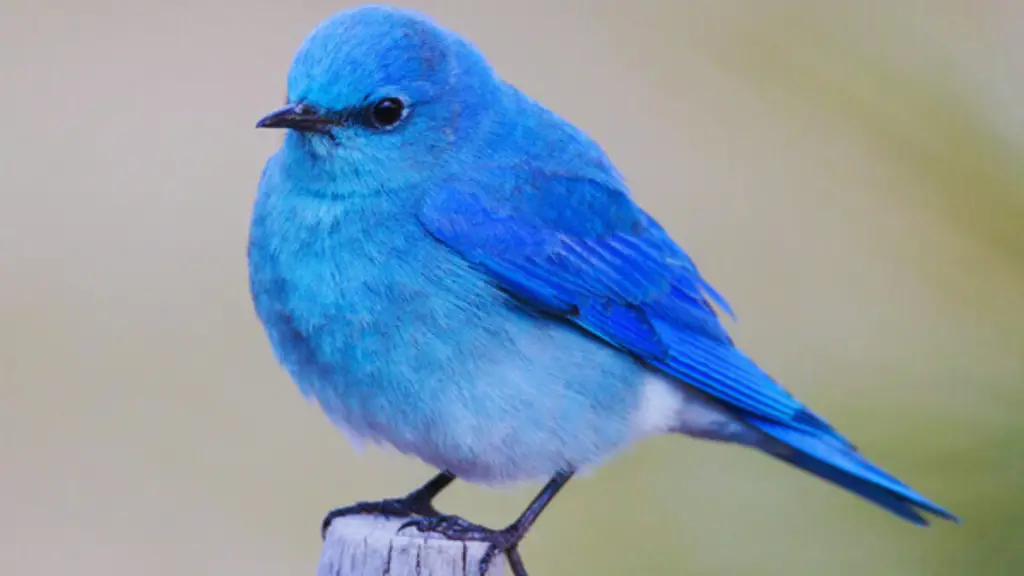
The Mountain Bluebird is a stunning bird species known for its sky-blue eggs. These eggs are a pale blue color and have been described as resembling a robin’s egg. Mountain Bluebirds typically lay 4-6 eggs per clutch and will often lay a second clutch in the same nesting season.
These birds prefer open habitats such as mountain meadows and sagebrush plains. They are also migratory, breeding in the western United States and Canada and spending winters in the southern United States and Mexico.
| Nesting Habits | Habitat Preferences | Migratory Patterns |
|---|---|---|
| Mountain Bluebirds typically nest in tree cavities or nest boxes. They will also use abandoned woodpecker holes or other natural cavities. | These birds prefer open habitats such as mountain meadows, sagebrush plains, and golf courses. | Mountain Bluebirds are migratory, breeding in the western United States and Canada and spending winters in the southern United States and Mexico. |
Mountain Bluebirds are also known for their insectivorous diet, which is supplemented by berries and other fruits. They are an important species for controlling insect populations in their habitats.
Fun Fact:
The Mountain Bluebird is the state bird of Idaho and Nevada.
European Starling (Sturnus vulgaris)
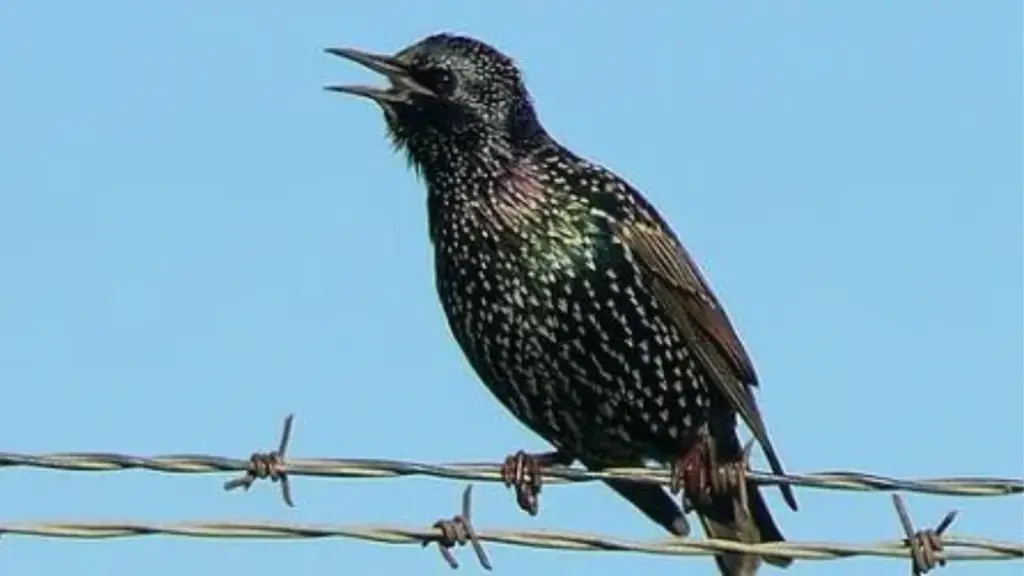
The European Starling is another bird species known for laying pale blue eggs. These eggs are typically laid in nests constructed in tree cavities or man-made structures such as buildings and nest boxes. The European Starling is known for its aggressive nesting behavior and ability to adapt to various habitats, including urban environments. However, this adaptability has also contributed to their invasive species status in some regions.
Turquoise-browed Motmot (Eumomota superciliosa)

The Turquoise-browed Motmot is a stunning bird known for its vibrant blue-green eggs. These turquoise-colored eggs are laid in burrows dug into steep mud banks, with both male and female birds taking turns to incubate the eggs.
Found primarily in Central America, the Turquoise-browed Motmot is a colorful and charismatic bird that is a favorite of birdwatchers and nature enthusiasts. Their unique nesting behavior, with the excavation of burrows, sets them apart from other blue egg-laying birds.
Blue Jay (Cyanocitta cristata)

If you’re lucky enough to spot a Blue Jay’s nest, you might be able to catch a glimpse of their distinct blue eggs. These eggs often have brown speckles, giving them a unique appearance.
Blue Jays are known for their intelligence and resourcefulness. They often build their nests in dense foliage, hidden from view. They have also been observed mimicking the calls of other birds and animals, adding to their clever reputation.
Although Blue Jays are a common sight in many backyards, their populations have been declining due to habitat loss. If you want to help these beautiful birds, consider providing nesting boxes and planting native vegetation to provide food and shelter.
Other Blue Egg Laying Birds
In addition to the birds mentioned above, there are several other species that are known for laying blue eggs. Here are a few more blue treasures you may come across:
| Bird Species | Egg Color and Characteristics |
|---|---|
| Indigo Bunting | The eggs are a bright blue color, with a few brownish speckles. They are about 0.6 inches long and 0.5 inches wide. |
| Azure-winged Magpie | The eggs are a pale blue color, with brown and gray speckles. They are about 1.2 inches long and 0.9 inches wide. |
| Fairy Wren | The eggs are a bright blue color, with a few reddish-brown speckles. They are about 0.6 inches long and 0.4 inches wide. |
These birds are all unique in their own way and contribute to the beauty of nature. If you’re lucky enough to spot a blue egg in a nest, take a moment to appreciate the wonder of these blue treasures.
Blue Eggs in Bird Nests: How to Spot Them
As a birdwatcher, spotting nests with blue eggs can add an extra thrill to your nature outings. But how can you identify them?
First, it’s important to know which bird species are known for laying blue eggs. As discussed in this article, some examples include the Eastern Bluebird, American Robin, Mountain Bluebird, European Starling, Turquoise-browed Motmot, and Blue Jay.
Next, keep an eye out for nests with blue eggs in areas where these bird species are known to nest. For example, Eastern Bluebirds prefer open woodland areas, while Mountain Bluebirds can be found in open meadows and mountainous regions.
When you spot a nest, observe its size, shape, and location. Some birds, like the Blue Jay, hide their nests in dense foliage, while others, like the Turquoise-browed Motmot, excavate burrows in banks or cliffs.
Remember to always practice ethical birdwatching practices and respect the privacy of nesting birds. Avoid disturbing the nests or getting too close to them, as this can cause stress and harm to the birds and their eggs.
Protecting Birds That Lay Blue Eggs
If you are a bird enthusiast, you know that blue eggs are quite a rare and beautiful find. However, the birds that lay these blue treasures are facing threats that could lead to their decline. As a responsible birdwatcher, it is crucial to take steps to protect these birds and their habitats.
One of the biggest threats to blue egg-laying birds is habitat loss. Many of these species require specific types of habitat to breed and raise their young. Human activities such as logging, agriculture, and urban development are causing a loss of natural habitats that birds rely on. You can help by supporting conservation organizations and land trusts that work to protect and restore important bird habitats.
Climate change is also affecting bird populations in various ways. Some species may shift their breeding ranges due to changes in temperature and precipitation patterns, while others may face challenges in finding enough food to feed their young. To help address climate change, you can reduce your carbon footprint by walking or biking instead of driving, reducing energy consumption, and supporting policies and initiatives that promote sustainable practices.
Another threat to blue egg-laying birds is predation. Nest predators such as raccoons, snakes, and squirrels can devastate bird populations if left unchecked. To protect birds from predators, you can install predator guards on nest boxes, remove invasive plant species that provide cover for predators, and keep domestic cats indoors.
By taking action to protect blue egg-laying birds, you can help ensure that these unique and beautiful species continue to thrive in our world. Remember to always practice ethical birdwatching and respect the privacy of nesting birds. Together, we can make a difference in preserving the beauty and diversity of our natural world.
Blue Eggs in Cultural Symbolism
Blue eggs have long been associated with cultural symbolism in various traditions. In Christianity, they represent the resurrection and new beginnings, as well as the Virgin Mary. In Chinese culture, blue eggs are thought to bring luck and prosperity.
In art and literature, blue eggs are often used as a symbol of beauty, rarity, and perfection. The blue egg of the robin, for example, has been featured in many poems and paintings as a quintessential symbol of spring and renewal.
Blue eggs have also been used in folklore and mythology. In Native American legend, the blue egg represents the source of all life, while in Celtic mythology, it symbolizes transformation and rebirth.
“The gentle robin, in its russet coat, steps out of hiding and slyly lays a turquoise egg of perfection; a musical instrument, a precious stone… a blue world.” – Niall MacMonagle
The rich cultural significance of blue eggs highlights their value beyond their beauty and scientific importance. As we continue to admire and appreciate these natural wonders, we can also recognize their place in human history and culture.
Conclusion
Now that you have learned about birds that lay blue eggs, you can appreciate the beauty and uniqueness of these blue treasures in nature. From the Eastern Bluebird to the Turquoise-browed Motmot, these birds are fascinating species with distinctive egg-laying behaviors and preferred habitats.
Remember, ethical birdwatching practices are crucial to protect nesting birds and their eggs. Keep a respectful distance and avoid disturbing their natural habit as you observe these magnificent creatures.
Conservation efforts are also essential to ensure the survival of bird species that lay blue eggs, especially as they face threats from habitat loss and climate change. By taking action and supporting bird conservation initiatives, you can make a positive impact on the preservation of these blue treasures in nature.
Finally, the cultural significance and symbolism associated with blue eggs in various cultures and traditions are examples of how these birds have influenced human beliefs and art. Whether in art or in nature, birds that lay blue eggs will always be some of the most fascinating and beautiful creatures in the world.
What Birds Lay Blue Egg: FAQs
Q: What birds lay blue eggs?
A: Some bird species known for laying blue eggs include the Eastern Bluebird, American Robin, Mountain Bluebird, European Starling, Turquoise-browed Motmot, Blue Jay, Indigo Bunting, Azure-winged Magpie, and Fairy Wren, among others.
Q: Why do some birds lay blue eggs?
A: The blue coloration of bird eggs may serve as a form of camouflage, help with thermoregulation, or attract potential mates.
Q: What is the Eastern Bluebird?
A: The Eastern Bluebird (Sialia sialis) is a bird species known for its light blue eggs. They prefer nesting in open habitats and are commonly found in North America.
Q: What is the American Robin?
A: The American Robin (Turdus migratorius) is a bird species with unique blue eggs. They build cup-shaped nests and are widespread across North America.
Q: What is the Mountain Bluebird?
A: The Mountain Bluebird (Sialia currucoides) is a bird species known for its stunning sky-blue eggs. They prefer open meadows and mountainous regions and display migratory patterns.
Q: What is the European Starling?
A: The European Starling (Sturnus vulgaris) is a bird species that lays pale blue eggs. They are known for their aggressive nesting behavior and ability to adapt to various habitats, but are considered an invasive species in some regions.
Q: What is the Turquoise-browed Motmot?
A: The Turquoise-browed Motmot (Eumomota superciliosa) is a bird species with vibrant blue-green eggs. They are found in Central America and have unique nesting behavior, including the excavation of burrows.
Q: What is the Blue Jay?
A: The Blue Jay (Cyanocitta cristata) is a bird species with distinctive blue eggs. They often hide their nests in dense foliage and are known for their intelligence and mimicry abilities.
Q: Are there any other birds that lay blue eggs?
A: Yes, there are other bird species that lay blue eggs, such as the Indigo Bunting, Azure-winged Magpie, and Fairy Wren. Each species may have unique characteristics or behaviors related to their egg-laying.
Q: How can I spot nests with blue eggs?
A: To identify nests with blue eggs, birdwatchers can look for certain behaviors, such as adult birds frequently visiting a specific area or carrying nesting materials. It is important to practice ethical birdwatching and respect the privacy of nesting birds.
Q: Why is it important to protect birds that lay blue eggs?
A: Conservation efforts for bird species that lay blue eggs are crucial to ensure their survival. Habitat loss and climate change pose threats to these birds, and individuals can contribute to their protection by supporting conservation organizations and creating bird-friendly habitats.
Q: What is the cultural symbolism of blue eggs?
A: Blue eggs have cultural significance and symbolism in various cultures and traditions. They may represent fertility, rebirth, or spirituality and can be found in art, literature, and folklore.

